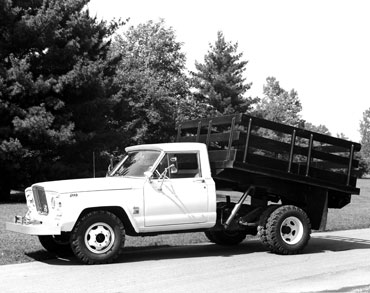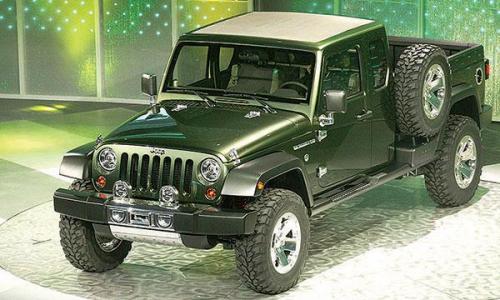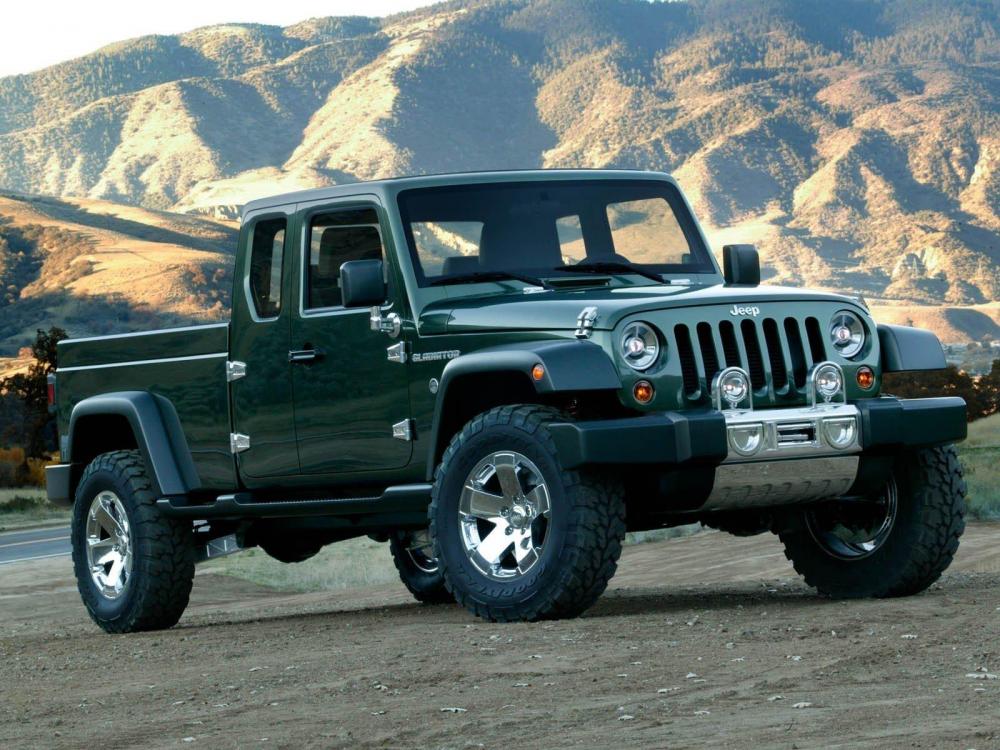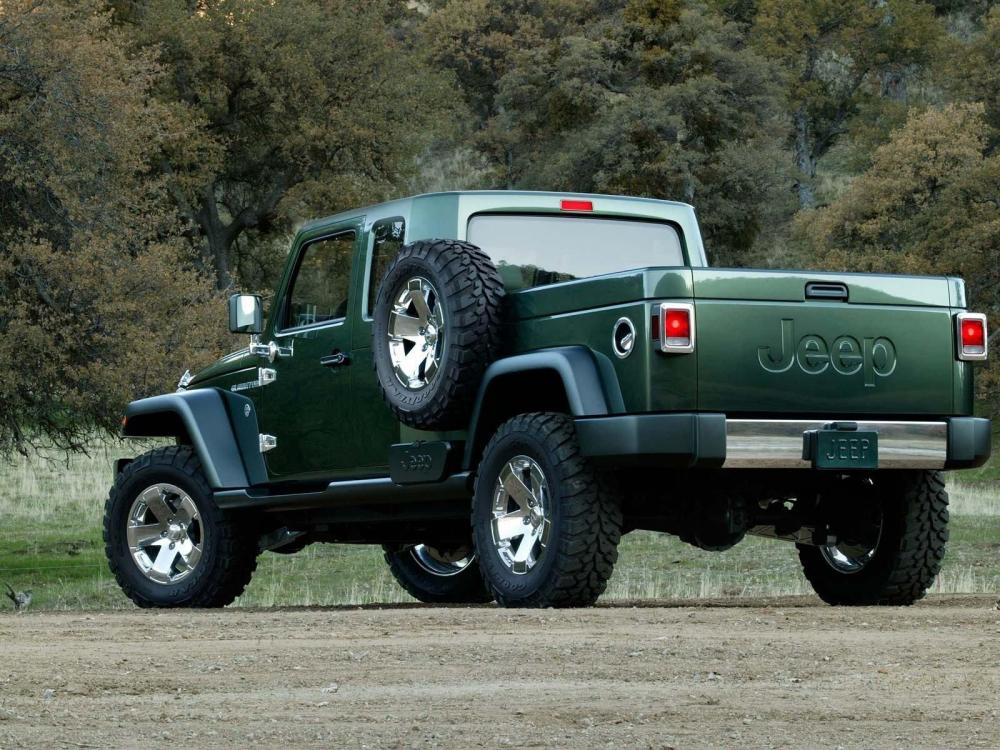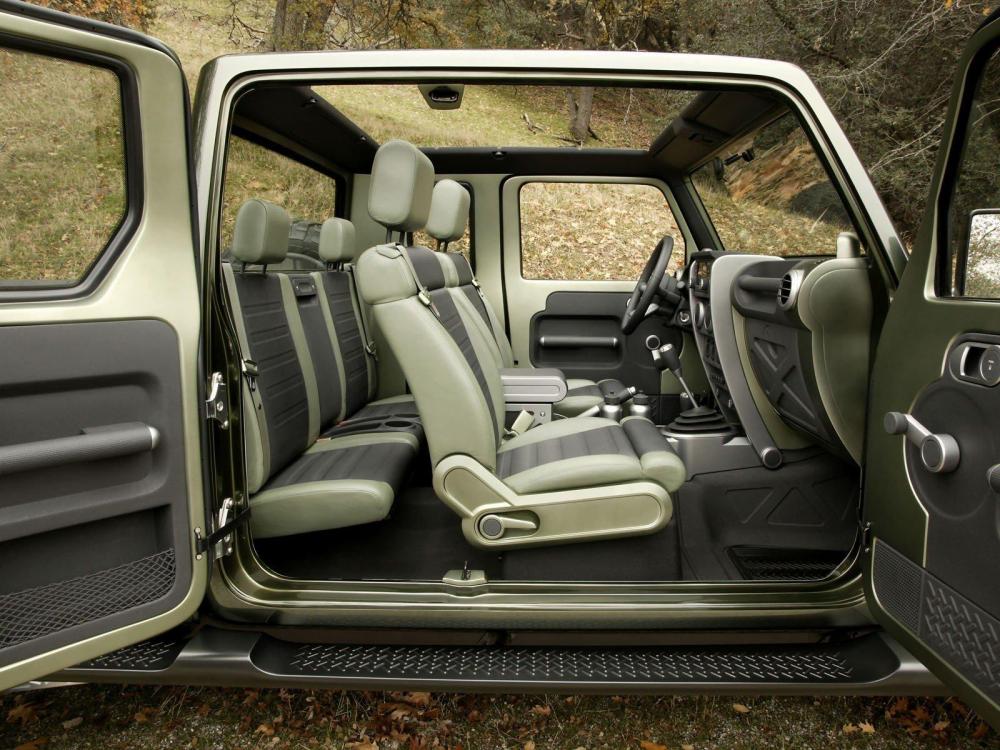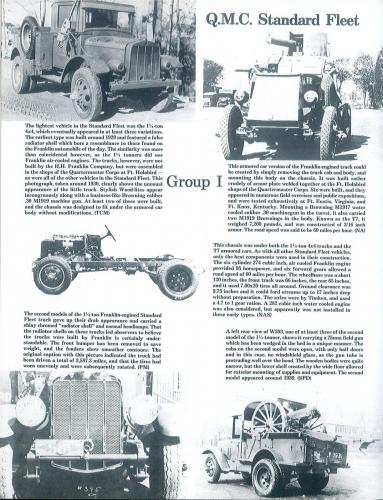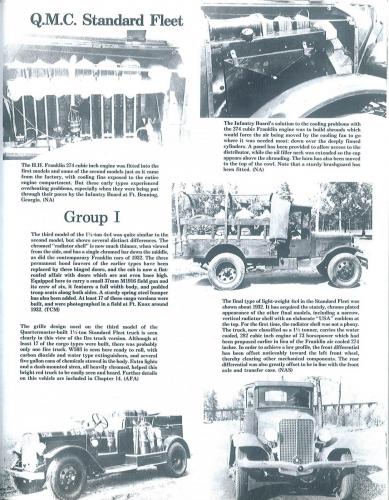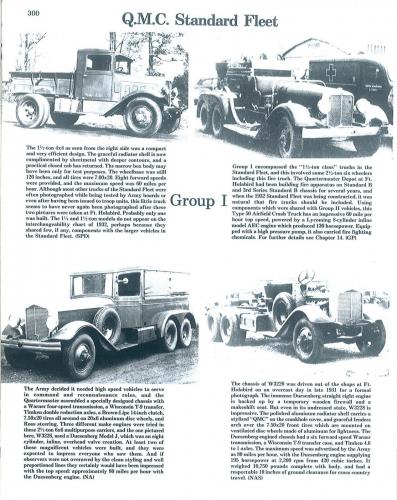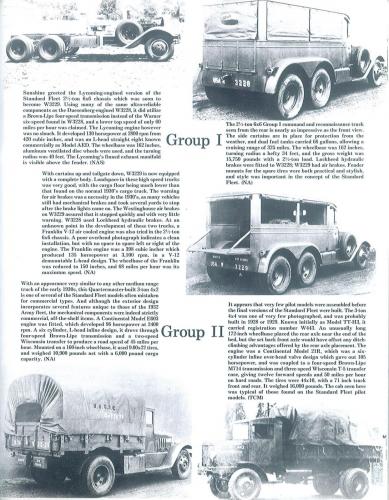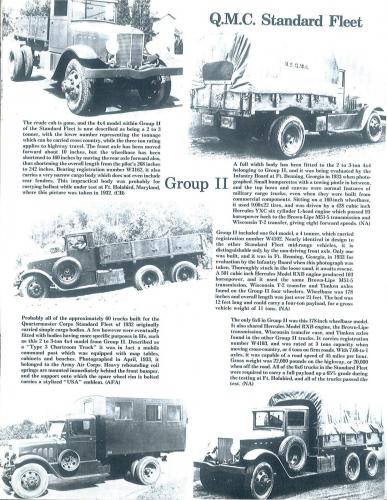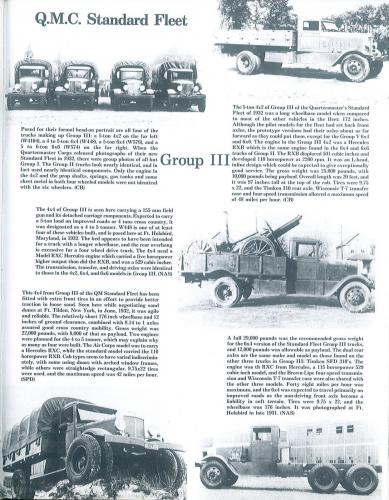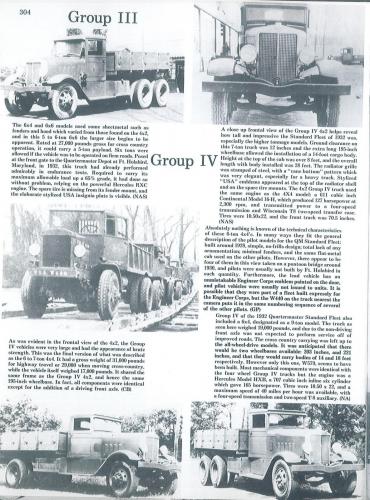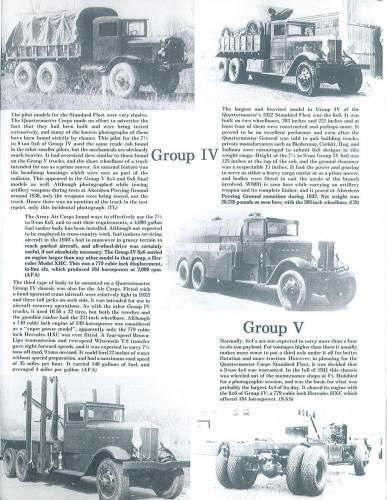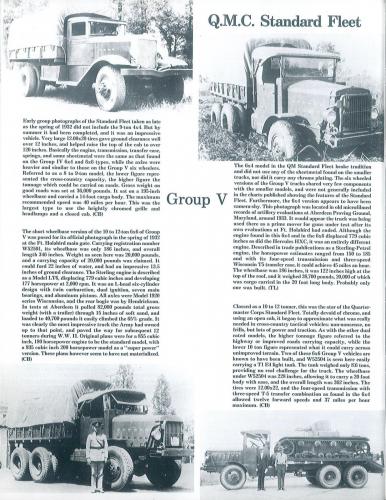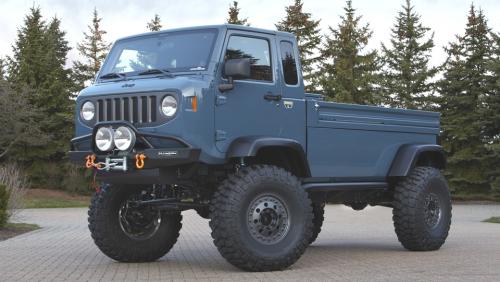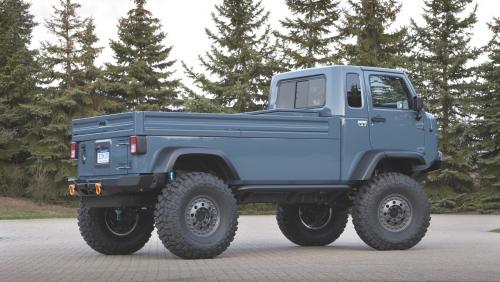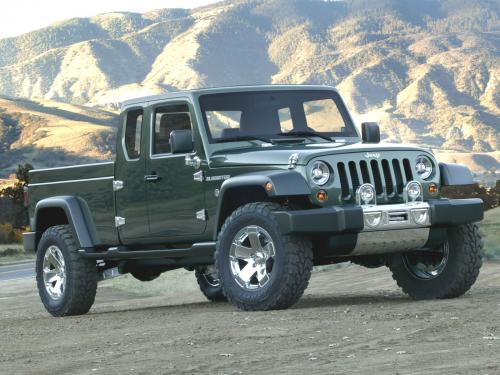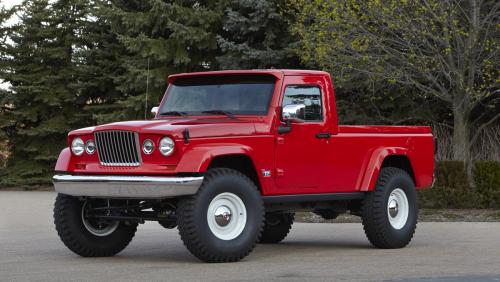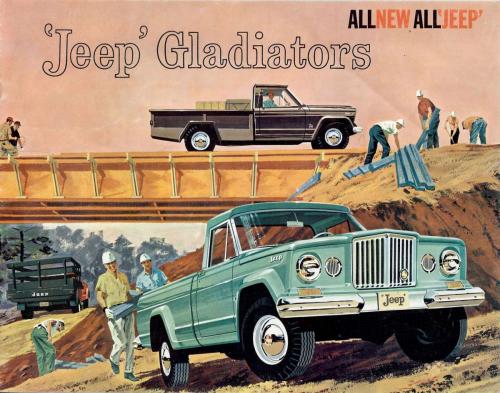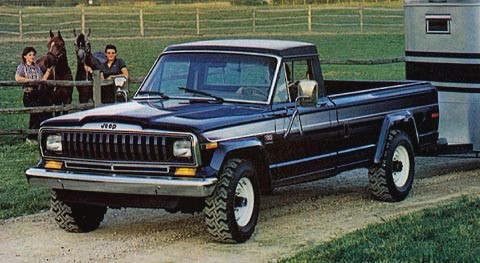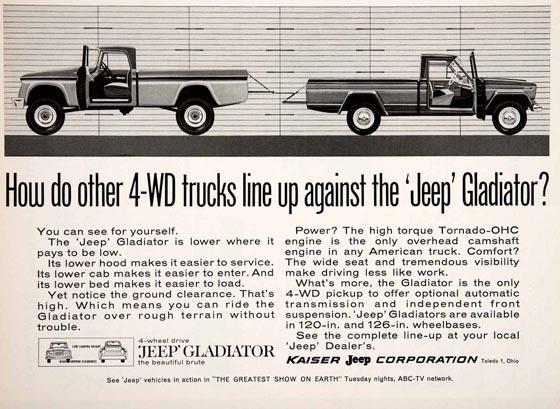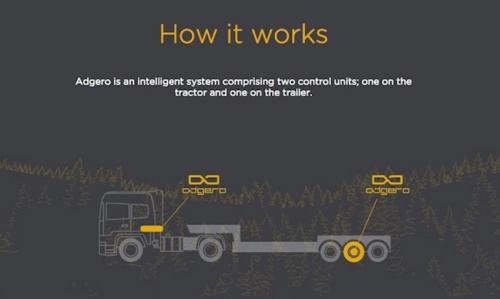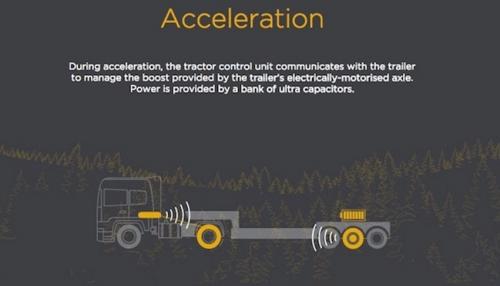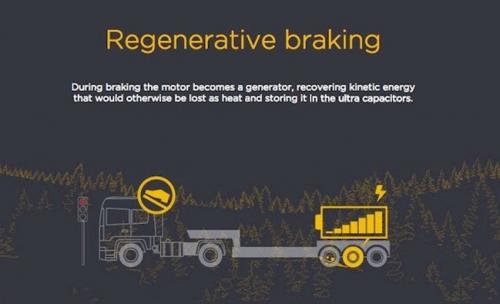
kscarbel2
Moderator-
Posts
17,891 -
Joined
-
Days Won
86
Content Type
Profiles
Forums
Gallery
Events
Blogs
BMT Wiki
Collections
Store
Everything posted by kscarbel2
-
Many knew the 1/2 ton J-10 and 3/4 ton J-20, but are unaware there was a one-ton dual rear tire J330 (later designated J3800). .
-
GMC doesn't care if it's Mt. McKinley or Denali The Detroit Free Press / August 31, 2015 As far as GMC is concerned, people are making a molehill out of a mountain. "It had no impact or change on our strategy," says GMC spokeswoman Kelly Wysocki. The brand name for the Denali may get a little more notice from President Barack Obama's plan change the name of North America's tallest peak -- back to its original moniker. Alaska's Mt. McKinley will be known again as Denali, though to auto enthusiasts, it's better known as GMC's sub-brand of luxury vehicles. Nor does she expect having the new "old" mountain name in news to impact sales. General Motors first introduced Denali as an upscale trim level on the 1999 GMC Yukon full-size SUV in 1999, but now is a sub-brand of eight individual models, according to the company. To date, more than 800,000 have been sold. More than half of all GMC Yukons sold currently are Denalis, while nearly half of all Sierra HDs and 30% of Acadias last year were Denalis, too. "The name itself means 'the high one.' For us, it’s the ultimate expression of our professional grade. That’s our motto at GMC," Wysocki said. "It reflects back to Denali. It did have to do with Mt. McKinley." The 20,237-foot mountain's original name stems from the Koyukon Athabaskan language of Alaska natives, but was re-christened Mt. McKinley in 1896 to honor of Ohio Republican William McKinley, who then was running for president and would become the 25th person to hold the office. (He was assassinated by Michigan native Leon Czolgosz in 1901.) "It’s a great thing for the Alaskans that’s it will be named what it should've been named originally," said Kristyn King, a 39-year-old nurse from Eastpointe, who drives a black 2006 GMC Envoy Denali, but didn't know the origin of the sub-brand's name. "I think more people will know now. They'll recognize the name as being the 'higher point.'" Some branding experts think the Detroit automaker should jump on the back-to-Denali designation before all the chatter melts away faster than some snow on Mt. McKinley, er, Denali. "It's the kind of publicity GM really couldn’t pay for, because you have the leader of the free world now talking about the product and talking about the actual name," said Hajj Flemings of Birmingham-based Brand Camp University. "That alone gives more credence and more visibility to GM and they could ride on that. If I were GM, I would look for ways to take that moment and develop some momentum around it. There’s a life cycle to it. In a month from now, we won’t be talking about it. What the brand needs to do is leverage that." The White House announced the name change on Sunday, though U.S. Department of Interior Secretary Sally Jewell signed the secretarial order on Friday. The then-governor of Alaska first made the mountain name-change request in 1975. The name of the national park where the mountain is situated was changed back to Denali in 1980.
-
Jeep Wrangler to stay in Toledo, Cherokee leaving, Wrangler-based pickup coming Automotive News / September 1, 2015 Fiat Chrysler has decided to keep making the Jeep Wrangler in Toledo, Ohio, move production of the Jeep Cherokee to a nearby state and build a Jeep pickup. The news comes after 11 months of uncertainty about the fate of Wrangler production in its historic home. Details about the Wrangler and Cherokee were shared with Toledo plant management this morning in response to inquiries from Automotive News, based on an exclusive interview with CEO Sergio Marchionne on Aug. 21. Automotive News has learned independently that Jeep will make a Wrangler-based pickup in Toledo, a move that will soften the blow of a transferred Cherokee -- Jeep’s best-selling vehicle. Marchionne said that the automaker has “found a solution” to how best expand production of the Wrangler -- in Toledo. Details of the plan will be announced after FCA’s contract talks with the UAW conclude; the contract expires Sept. 14. Separately, Automotive News has confirmed that the plan includes building a long-sought Wrangler-based pickup, likely in 2017 or 2018. That vehicle is under development. In the interview, Marchionne provided some details of the emerging plan: “We found a solution that accommodates a variety of other interests to us because of the way in which we can move some product around,” the CEO said. “It doesn’t take a rocket scientist [to know] that the only way I can move around the Wrangler is to move it into the other Toledo plant.” An FCA spokeswoman said the company would not comment and that the CEO’s quotes stood for themselves. Marchionne has said since January that he preferred to keep Wrangler production in Toledo. FCA’s Toledo Assembly Complex is composed of two plants: one smaller body-on-frame plant that builds the Wrangler and another nearly new unibody plant that builds the Cherokee. The two lines share some common parts staging, but otherwise operate independently. The plan would require the unibody plant, locally known as Toledo North, to be converted to body-on-frame assembly. The redesigned Wrangler would launch there. Loss of the Cherokee is a blow to Toledo, which had sought to keep the vehicle and expand Wrangler production. Through August, the Cherokee is Jeep’s top-selling vehicle in the U.S., averaging 17,611 sales per month. However, that wound may be salved if new vehicles to be added prove as popular. FCA’s plan would ensure that Wrangler production would continue while the plant is retooled for the redesigned 2018 Wrangler. The off-roader is one of the automaker’s most popular and profitable vehicles. Production of the redesigned Wrangler and pickup is planned to reach 350,000 per year, according to suppliers briefed on the plan. The Cherokee would move, likely to Sterling Heights Assembly in Michigan, or possibly Belvidere Assembly in Illinois. Both plants are capable of building the Cherokee with little or no retooling, as the Cherokee shares a platform with the Chrysler 200 built in Sterling Heights and the Dodge Dart built in Belvidere. Converting Toledo Assembly to all body-on-frame construction would solve another problem for FCA, Marchionne hinted. It would allow FCA to retool Warren Assembly in Michigan, where it makes the hot-selling Ram 1500 pickup. Marchionne said that, like the Wrangler, he can’t afford to lose production of the Ram 1500 in order to retool. “We still have Warren that’s not fixed from a manufacturing standpoint,” the CEO said. Marchionne said his two constraints are “that I can’t take down a day of Wranglers, and I can’t take down a day of trucks. So I need to move them around.” A Wrangler-based pickup has been on Jeep enthusiasts’ wish list since the brand showed the Jeep Gladiator concept in 2005. The Gladiator was built on a Ram 1500 frame and shared Wrangler styling. It is unknown whether the Wrangler-based pickup would be Gladiator-sized or smaller, to compete with the redesigned Chevrolet Colorado and GMC Canyon, as well as a potential Ford Ranger pickup. Either way, the Jeep badge and underpinnings should allow it to sell at a premium above those offerings. Unknown for now is what will happen to land the city of Toledo assembled for a possible Jeep expansion. Toledo economic development officials have sought ways to close the cost gap and keep Wrangler in its historic home. For years, Toledo had been quietly buying industrial land adjacent to FCA’s sprawling Toledo Assembly Complex in case expansion was needed. To date, more than 100 acres are available nearby. That land could be made available for suppliers, or it could be saved for future expansion of the current Wrangler line. .
-
Long before freight company Consolidated Freightways decided to form Freightways Manufacturing in 1939 for the in-house design and production of trucks for their own use (badged as Freightliners from 1942), the United States Army became an American truckmaker in 1928. Following the end of World War One in 1919, the U.S. military was demobilized. With numerous states requesting surplus military trucks for road work, Congress sold over 90,000 trucks at bargain prices, leaving the U.S. Army with less than 30,000 trucks by 1921. The U.S. Army was facing a serious problem. The trucks that Congress allowed them to retain were wearing out quickly, and no funding was being authorized to purchase new units. And importantly in the Army’s mind, most of their remaining trucks were essentially 4x2 MILCOTS (military commercial off-the-shelf), trucks that had no tactical cross-country capability. An effort had been made to update World War One Standard B “Liberty” trucks to a more modern “3rd series” specification, but they remained obsolete in design and the conversion rate was too low. In 1920, the U.S. Army Quartermaster Depot at Fort Holabird, Maryland began assembling cross-country vehicles and evaluating their performance. For the most part, components from existing vehicles were used. At Fort Holabird, Army Captain and Chief Engineer Arthur W. Herrington realized that his people could develop and produce purpose-designed high performing cross-country trucks at substantially lower costs than what the automakers were charging the Army for their commercial trucks. Though the automakers were anxious to profit from Army truck sales, few were building a suitable modern truck with all-wheel drive, particularly in the Army’s high volume one to three ton range. In 1928, U.S. Army automotive engineers at Fort Holabird began work on prototypes that would lead to a range of trucks from a 1-1/4 ton 4x4 to a 12 ton 6x6. The design team created five families of vehicles, Group I thru Group V, related to weight class. Incorporating the latest components available at the time, the prototypes were extensively tested and far exceeded the Army’s expectations. The result was the U.S. Army’s new “Standard Fleet”, one of the most impressive groups of purpose-built military tactical trucks ever built. Introduced to the public in 1932, the Standard Fleet was breathtaking. Standing tall with chrome radiator shells and headlamps, they incorporated mechanical components from the industry’s leading suppliers. Featuring Continental, Duesenberg, Franklin, Hercules, Lycoming and Sterling engines, Brown-Lipe, Spicer and Warner transmissions, Wisconsin transfer cases, Rockwell, Timken and Wisconsin axles, Lockheed hydraulic brakes and Westinghouse air brakes, and Ross steering, the Army purchased quality and reliability. Appropriately so, the trucks were badged with "USA" emblems atop the radiator grilles. Tested in Maryland at both Fort Holabird and Aberdeen Proving Ground, the trucks were universally praised by all who used them. Heat-treated frames, completely enclosed cabs, abundant power, high speed and modern drivetrains made the Standard Fleet far superior to the commercial models. A total of 60 units were built, at a cost ranging from two-thirds to four-fifths of the costs of a commercial truck, if indeed there was an equivalent available. Fire trucks and armored cars were also built on Standard Fleet chassis. The U.S. automakers were alarmed by the U.S. Army Quartermaster Corps’ efforts to build trucks in-house, and immediately lobbied Congress to put an end to further development and production. The power and money of the U.S. automakers prevailed, and Congress forced the Army to largely abandon truck production (with the exception of fire trucks based on 3rd series Standard B truck chassis). The most notable result stemming from the Standard Fleet undertaking was that the U.S. automakers finally began offering a wide range of all-wheel drive trucks to meet the Army’s needs. While FWD and Oshkosh had offered rugged all-wheel drive trucks, they were too expensive to purchase in large quantities. All-wheel drive heavy trucks were made available by Biederman, Clydesdale, Corbitt, Hug and Indiana in 1933, followed later by Chevrolet, Diamond T, Dodge, Federal, Ford, GMC, International, Mack Trucks, Reo and Studebaker. A newcomer in the truck business was Marmon-Herrington, created by combining the Indianapolis-based Marmon with Arthur W. Herrington’s truck designing expertise. Aggressive and innovative, Marmon-Herrington produced thousands of light, medium and heavy trucks for the U.S. Army. To no one’s surprise, the final Standard Fleet models bore a strong resemblance to the 3 to 7-1/2 ton trucks later built by Marmon-Herrington. Further reading - http://forums.aths.org/PrintTopic101639.aspx http://www.amazon.com/Military-Wheeled-Vehicles-Crestline-Automotive/dp/0912612215/ref=tmm_hrd_swatch_0?_encoding=UTF8&qid=&sr= .
-
I agree. Let's recap. In 1867, U.S. Secretary of State William H. Seward signed a treaty with Russia for the purchase of Alaska for $7.2 million. The purchase was dubbed "Seward's Folly" by skeptics (that was a lot of money back then), UNTIL gold was discovered in 1896. We bought the location, which gave us the right to issue new names. But I lean towards using the native name (Denali), which was used long before us, and likely will be long after we're gone. America has a long history of using native American names for land and water. The state's name, Alaska, is itself an Aleut name (https://en.wikipedia.org/wiki/Aleut_language). But there are repercussions.........Obama will have to spend millions of taxpayer dollars annually to use the Denali name, a registered trademark of General Motors for its GMC brand.
-
-
Scania Press Release / August 31, 2015 The latest addition to Scania’s engine range for marine applications incorporates proven XPI (extra-high pressure injection) common rail fuel injection technology, allowing for unrivaled fuel efficiency. The new V8 engine is also the most powerful engine in the range, boasting up to 1,150 hp. Scania’s new, more powerful marine engine range now features the company’s 2500 bar XPI fuel injection system, long used in Scania’s engines for trucks and industrial applications. Boosting power Svante Lejon is a senior technical adviser within Scania’s Research and Development division and his responsibilities include developing technical performance concepts for industrial and marine engines. “The XPI system introduces more fuel into the cylinders in a shorter time, providing more power,” he says. “However, this also places higher demands on both the filtration system and the cleanliness of the fuel, as the system is more sensitive to particles.” Lejon says the challenges involved have meant that Scania has not previously used common-rail technology in its marine solutions. “The fuel quality required for marine applications is different to that for trucks and industrial applications,” he says. “However, filter technology has now reached a level that allows for performance and up-time to be maintained at the high level that Scania expects.” Smaller footprint The V-8 version of Scania’s marine engine is based on the company’s tried-and-tested 16.4-litre V-8 for trucks. The engine is the most powerful in the marine range and is capable of producing up to 1,150 horsepower for use in working boats. While this represents an increase in power on the previous generation, the physical size of the complete installation has actually decreased making it easy to upgrade an existing V-8 installation to the new engine platform. Scania’s modular system in combination with the company’s Engine Management System (EMS) allows for the same platform to be used in different applications. An engine solution can thus be tailored for completely different operating profiles without compromise. “It’s thanks in part to Scania’s Engine Management System that we’re able to optimise our engine platform for such a wide range of areas,” says Lejon. “Otherwise, we would be forced to make an engine that wasn’t as good for each area.” Related photographs - http://newsroom.scania.com/en-group/2015/08/31/scanias-proven-fuel-injection-technology-arrives-in-the-marine-sector-2/
-
MAN Press Release / August 31, 2015 Completely new, redesigned engineOutstanding in its output classExtended range of applications for yachts of over 100 feetFrom 8 to 13 September 2015, MAN Engines will showcase their most powerful high-speed four-stroke diesel engine to date at the Yachting Festival in Cannes. The 24.2-liter twelve-cylinder model V12-1900 engine is rated at 1,900 horsepower and was specifically designed for use in luxury yachts of over 100 feet. The complete redesign of the injection, power train and cooling system has allowed MAN to achieve an increase in output of 100 horsepower over the current V12-1800. With installation dimensions of 2,139 mm x 1,153 mm x 1,265 mm (length x width x height), the V12-1900 comes in the MAN Engines customary compact size. At 2,365 kg (dry weight) and with an output of 1,900 horsepower, MAN Truck & Bus’s most powerful series engine has an outstanding power to weight ratio with a high power density and compact installation dimensions, giving boat builders significant room to maneuver in terms of design. A maximum torque of 6,220 Nm, at 1,200 to 2,100 rpm, makes the V12-1900 the most powerful engine to date in the MAN Engines portfolio. The high-performance unit generates its power from 24.2 litre displacement ensuring high power development even at the lower end and right across a broad speed range. The even and constant acceleration delivers a pleasant and comfortable ride right through to the upper end of the speed range. The special design ensures very smooth running and thus provides a relaxed ride, adding to the comfort on board. “Our V12-1900 sets the benchmark in this output class in terms of dry weight, specific output and power to weight ratio” proudly commented Claus Benzler, head of Marine at MAN Engines. At its optimum, the specific fuel consumption of the V12-1900 is at the same low level of 190 g/kWh as its heavier sister model, the V12-1800. The V12-1900 is MAN's response to the issue of increased performance for both planning and displacement hulls. At the same time and as a result of the increase in horsepower, the Bavarian-based engine manufacturer now has access to further types of ship with higher output requirements. MAN thus provides boatyards with a perfectly balanced range for all output requirements in leisure boating. The product range offers in-line 6-cylinder as well as V8 and V12 engines and covers the full range of performance from 537 to 1,397 kW (730 to 1,900 hp). All engines are also available in compliance with the strict EPA Tier 3 emissions standard. For those customers seeking something extra, optional gilded or chrome-plated cylinder head covers as well as a design cover are available. The engine can be ordered and delivered from now on. The V12-1900 can be seen from 8 to 13 September 2015 at the Yachting Festival in Cannes on stand Jetee 138. Related photograph - http://www.corporate.man.eu/en/press-and-media/presscenter/King-of-the-Lions_-MAN-12-cylinder-yacht-engine-now-with-1_397-kW-_1_900-hp_--220096.html
-
Fleet Owner / August 31, 2015 Truck and engine manufacturer Navistar said it plans to begin offering over-the-air (OTA) re-programming of engine control modules (ECMs) for its N9, N10 and N13 proprietary engines in early 2016 – a service that’s been the longtime goal of many OEMs within the commercial vehicle industry. “Over-the-air reprogramming will revolutionize the way our customers’ trucks are serviced and maintained,” noted Bill Kozek, president of Navistar Truck and Parts, in a statement. “This … is paving the way for future advancements that will drive improvements in vehicle uptime and real-world, bottom-line results for our customers.” Dr. Steve Charlton, the now-retired VP and chief technology officer for the engine business at Cummins, noted two years ago that such “on the fly” reprogramming should at some point become no more difficult than downloading digital music files. “There’s already a broadcast of public information from today’s engine control modules of public data such as throttle and torque,” he explained during a presentation at the Mid American Trucking Show back in 2013. “But then there’s private data we can extract that enriches that public data and turns it into information.” That detailed information can then be crafted into precise engine calibrations truck owners can tap into to improve whatever operating characteristics of their vehicles they desire, Charlton said at the time, be it for better fuel economy or better performance. “We expect users will be able to download and apply calibrations just like the way you download and use songs from iTunes,” he noted. “We see this as a huge enabler going forward." Navistar expects similar benefits from its “OTA” offering, which will allow customers to reprogram their ECMs via a secure Wi-Fi connection. Mike Cerilli, GM for Navistar’s connected vehicle business division, noted that Navistar has wrapped up its initial OTA testing and next is planning customer fleet tests this fall, with the system expected to be available for 2017 model International-branded trucks equipped with N9, N10, and N13 engines early next year. “OTA lays the groundwork for a pipeline of connected vehicle services such as partner engine and component calibration updates, body control module updates and future cellular capabilities,” Cerilli said in a statement. “These and future advancements will provide improved customer uptime, fuel efficiency and other benefits that will drive added value for customers.” Cummins OTA video - http://fleetowner.com/technology/navistar-plans-offer-over-air-engine-updates
-
Allison Cites Fuel Savings Using TC10 Transmission
kscarbel2 replied to kscarbel2's topic in Trucking News
Related reading: http://www.amazon.com/Vees-For-Victory-Aircraft-1929-1948/dp/0764305611 http://www.aviation-history.com/engines/allison.htm -
Transport Topics / August 31, 2015 Allison Transmission, which makes the only fully automatic transmission for heavy-duty trucks in the United States, said that fleets using its TC10 automatic gearbox report a 5% improvement in fuel economy over manual transmissions or automated manuals. Chairman and CEO Larry Dewey said during media day at headquarters here that the fully automatic transmission shifts more efficiently than either manual or automated manual gearboxes. Dewey, also Allison’s president, said that fuel is wasted when the power is interrupted during gear shifts with manuals or AMTs. “With the TC10, power goes to the wheels continuously,” he said. This increases fuel efficiency, particularly when there is more start-and-stop driving. When a manual or AMT shifts gears, the engine slows and has to come back up to driving speed. Dewey also said that automatic transmissions increase productivity and make driver recruitment and retention easier. Trucks with automatic transmissions accelerate more quickly from a stationary position, so they can move more quickly in urban traffic and merge into traffic more quickly. Dewey said that means that, over the course of a day, trucks arrive at their destinations sooner, so productivity goes up. Automatic transmissions help fleets expand the pool of drivers that can be hired by making driving easier. “The training period is significantly reduced,” Dewey said. “Drivers have to learn how to handle the big truck, but they don’t have to learn how to shift.” Allison, which celebrates its centennial this year, began production of its TC10 automatic in 2013. The company said its units are being used by about 140 fleets but would not disclose how many it has sold. Revenue totaled $2.127 billion in 2014. Transmissions used in over-the-road tractors account for 7% to 10% of Allison’s entire business, Dewey said. The company also makes transmissions that are used in buses, refuse trucks, delivery trucks, motor homes and a variety of vehicles for applications including agriculture and mining. The company was founded by James Allison, who also was one of the founders of Indianapolis Motor Speedway. In 1915, he started the Indianapolis Speedway Team Co., and four years later his team won the Indy 500. Today, Allison Transmission is the world’s largest manufacturer of fully automatic transmissions for medium- and heavy-duty commercial vehicles. In addition to its main plant in Indianapolis, Allison has manufacturing facilities in Hungary and India and regional headquarters in the Netherlands, China and Brazil. Besides truck and coach transmissions, the company has made aircraft engines, automatic transmissions for military tanks and hybrid propulsion systems.
-
Truck News / August 31, 2015 Every time I have the opportunity to drive Kenworth’s T880, the truck has evolved in some way, usually with the addition of new features and options that add to its versatility. The T880 was launched in 2013 as an alternative to the T800, a truck that generated an extraordinary amount of fanfare over its 25-plus-year run as the workhorse in the Kenworth stable. The truck maker continues to offer both models, but has already converted over most of its customers, with the T880 now representing 65-70% of the T800/T880 combined build. On a recent visit to Kenworth’s home base in Kirkland, Wash., I had the chance to drive a T880 up to the Paccar Technical Center in Mount Vernon, Wash., to see what it is about the T880 that’s winning over customers. The truck I drove had the newest available sleeper cab – a 76-inch mid-roof sleeper that will go into production in September on both the T680 and the T880. Ideal for tanker, flatdeck and lowboy applications, the new sleeper is 22 inches shorter and about 100 lbs lighter than a high-roof sleeper cab. Inside, it is both functional and roomy. If you don’t require an upper bunk, Kenworth provides ample storage along the back wall. Popular features such as the swivel passenger seat are retained to offer a highly livable space. There’s still plenty of headroom, allowing a driver up to 6’8” to stand upright. The longer sleeper cab offers more opportunities for customization. Beacon lights can be placed in several positions on the roof and you can also install roof-mounted horns. A side-of-cab exhaust option is available for those wanting to chrome up the truck. I was pulling a traditional van trailer loaded up to nearly 80,000 lbs, but you’d normally want to hook this truck up to a lower profile trailer for better fuel economy. My T880 had the Paccar MX-13 engine under the hood rated at its maximum 500 hp and 1,850 lb.-ft. or torque. It was sufficiently powered for any of the hills encountered on the drive to Mount Vernon and I was comfortably and safely able to pull out and pass slower trucks that were struggling on the hills. The transmission was Eaton’s MXP (Multipurpose Extreme Performance) UltraShift Plus, designed for vocational applications. The T880 has a more modern exterior design than the T800, but it has retained a bold, heavy-duty appearance. It is said at Kenworth that ‘Every great truck starts with a great grille.’ The T880’s wire aluminum mesh grille with stainless steel surround is distinctive and durable. It has an integrated bug screen and provides ample protection for the cooling module. A new box bumper – both chrome and painted – will soon be available, which is a popular option in Canada, according to Kyle Kimball, vocational marketing manager with Kenworth. Quarter-inch and 3/8” inch versions will be offered. The headlights on the T880 were built for vocational environments. The halogen bulbs are easy to replace without tools and can be found at pretty much any automotive retailer, including department stores. A thick polycarbonate lens provides extra protection from rock chips. The forward lighting system was designed to give good performance down field, but also produces 50% better lighting at the immediate front of the truck to improve safety while working at dark job sites. The front end was designed with reparability in mind. The five-piece Metton hood can be easily repaired and the fender can be removed by pulling 15 bolts in about an hour. Exterior air cleaners aren’t available on the T880, because its wider 2.1-metre cab won’t allow it. However, you can spec’ optional pre-cleaners that reject dirt and debris out the intake before they enter the air cleaner, extending air cleaner life in dusty environments. The hood can be lifted with just 35 lbs of effort, Kimball said, and it opens to 85 degrees for easy access. All the under-hood items that must be examined as part of the pre-trip inspection have been clustered together on the driver’s side to simplify inspections. Inside the cab, there’s a pre-trip inspection switch that cycles through all the lights, allowing the driver to check them with one lap around the truck. Inside, the T880 offers excellent forward visibility through a one-piece windshield that’s 50% larger than on the T8. Kimball explained Kenworth also lowered the crown of the hood by three inches, which can provide up to five feet of extra visibility immediately in front of the truck. Mirrors on the T880 are cowl-mounted, a key differentiator from sister company Peterbilt’s answer to this truck, the Model 567, which has door-mounted mirrors. Kimball said Kenworth prefers cowl-mounted mirrors because they’re more structurally stable, noting they can support 350 lbs without any risk of flexing the door or straining its hinges. The mirrors also stay in position better when the doors are frequently opened and closed, he added. Kenworth gives drivers options for getting in and out of the truck, with two handles on the inside of the door and optional handles available on the exhaust or side of the cab. They’ve even reinforced the map pocket to support 350 lbs, knowing some drivers grab it when climbing into or out of the cab. A new feature in the T880 is an electric-over-air system, in which all switches on the dash are electric, their communications funneled through the cab electronic control unit (ECU). “By going through the cab ECU, it looks at what the rest of the truck is doing and will allow or not allow switches to happen,” Kimball explained. For example, it won’t allow the operator to raise a dump body when the truck’s travelling down the highway. When the T880 hit the market, Kenworth realized it would take time to add all the options currently available on the T800, but in just two years, it now has about 95% of T8 options available, Kimball said. Some highly specialized options are all that’s currently lacking on the T880 and eventually, those will be available as well. There are still some T8 faithful who are reticent to make the switch to the more modern T880 but Kimball said once drivers get behind the wheel, they quickly see the benefits. There are no imminent plans to discontinue the T800. “Right now, the plan is to continue (offering both models),” Kimball said. “We’re definitely trying to convert people over to the T880 because of the features, the extra cab room and cab functionality, but we’re still offering the T800. We have a good success rate of converting people over once they get a chance to drive it.” I have nothing disparaging to say about the T800, but in terms of drivability and amenities, the T880 is an upgrade. Interestingly, one of the T880’s greatest attributes, its versatility, is landing the truck in some unexpected applications and even eating into the on-highway model T680’s turf. The vocational truck has found a following among on-highway customers who prefer the T880’s heavier-duty look. “Some lighter-weight stuff, 12,000- and 13,000-lb front axles are a good portion of T880 sales,” Kimball said. “A lot of people are still spec’ing it for on-highway applications. They want that heavy-duty truck. It still fits well, but to get the most bang for your buck, the T680 is the aerodynamic leader, so we’re trying to push people towards the T680 for on-highway. But a lot of customers want that heavy-duty look and feel to it as well.” Of course, for Kimball, having some unexpected demand from outside the T880’s anticipated market segments is a problem I’m sure he can deal with. Related photographs - http://www.trucknews.com/equipment/driving-kenworths-ever-evolving-t880/1003067485/
-
Jeep May Finally Build Wrangler-Based Pickup Car & Driver / August 31, 2015 The oft-teased idea of a pickup version of the Jeep Wrangler has gotten a new lease on life, according to a recent report in Automotive News. Springing from Fiat-Chrysler’s recent dealer meeting, the report says that a Jeep-branded mid-size pickup “could begin production in 2018,” depending on what happens with the Toledo, Ohio, factory that has long been the home of the Wrangler. The report also says the truck would have a short bed and make use of Wrangler suspension bits and powertrains. Jeep fans have long memories, and they have not forgotten the 1981–85 Scrambler, which was based on the CJ. The Scrambler featured a stretched wheelbase, a removable roof, and (naturally) four-wheel drive. Jeep itself has certainly been guilty of stoking the fires with a series of Wrangler-based pickup concepts. The most recent was the J-12 (which we drove) that additionally featured the retro goodness of the early ’60s Jeep J-series/Wagoneer front end. Back in 2005, we saw the more straight-up Wrangler pickup notion in the form of the Gladiator concept shown above. Its production-ready appearance and sweet-looking side-mounted spare had the faithful salivating, but the project never went anywhere. Then there was the Wrangler JT concept, which wowed crowds at the annual Jeep Easter Safari in Moab in 2009. Yet another two-door Wrangler pickup, this one was built on the four-door Wrangler Unlimited chassis. To fill the void, conversion and aftermarket companies have stepped in, such as AEV and its awesome Brute. Enough already. With a new Wrangler on the way in 2017, Marchionne and friends need to figure out a way to add a pickup variant. There’s a reason this idea just refuses to die. .
-
Michigan woman murders newborn Reuters / August 31, 2015 A Michigan woman pleaded not guilty on Monday at her arraignment on charges of first degree murder in the death of her newborn son, who was found sealed in a plastic bag and stored in a tote near her desk in March. Kimberly Pappas, 26, of Wyandotte, was found competent to stand trial in July on charges of felony murder, premeditated murder and first-degree child abuse in the death of the newborn, the prosecutor's office said. In court on Monday, Pappas stood quietly, while a plea of not guilty was entered by Wayne County Circuit Court Judge Bruce Morrow. There is no provision for bond when a defendant is charged with first degree murder, said Maria Miller, spokesperson for the prosecutor's office, in an email. Prosecutors said Pappas gave birth to a full-term infant in the bathroom at her workplace in Redford, Michigan, on March 31. An employee alerted the Redford Fire Department, which attempted to resuscitate the child, who was pronounced dead at a local hospital. The next hearing in the case was set for Oct. 5 at 9 a.m. Prosecutors say Pappas’s actions after delivering her baby at work constitute murder. Pappas initially told police that she'd miscarried and put her baby boy's body in a bag. But medical examiners have determined that the boy died of asphyxiation. The details of the case are graphic. Prosecutors allege Pappas, a temporary employee at CEVA Logistics in Redford Township, gave birth in the bathroom at work March 31. Pappas then put the baby in a plastic bag, which she placed inside her desk drawer before continuing to work. "She said no one helped her with the delivery; she did it on her own," said Detective Sgt. Kevin Crittenden of the Redford Township Police. "An employee was in the room with her for a short time and said she didn't notice anything unusual." Co-workers discovered blood in the restroom and called 911. Responders tried to revive the newborn. “The baby was still warm when rescue personnel found him,” but by then it was too late. The boy was pronounced dead at an area hospital shortly before noon. Although Pappas at first told police that she'd miscarried, she later admitted that she'd felt the baby moving right up to when she delivered him. The full-term infant lived approximately 30 minutes before he died of asphyxiation, a Wayne County Medical Examiner's Office report said. .
-
Trump says he'd deport illegal immigrants as U.S. president
kscarbel2 replied to kscarbel2's topic in Odds and Ends
On Sunday, Republican presidential candidate Jeb Bush criticized Trump's policy proposals for dealing with immigration. "He wants everyone deported, which would tear family lives asunder," calling Trump's plans "unconstitutional." "It's not conservative and it's not realistic and it does not embrace American values," Bush added. Similarly, on Trump's signature idea of building a wall along the U.S.-Mexican border, Bush charged that the proposal is likely impossible. "What Donald Trump is proposing is a wall that can't be built, and if it was, it would cost hundreds of billions of dollars." Bush added that "right now the number of Mexicans crossing the border is basically flat," suggesting that Trump misunderstood the immigration issue. Bush charged that "the immigrants that are crossing legally or illegally in both cases are from Central America now." ------------------------------------------------------------------------------------- Illegal immigrants are inherently criminals, individuals who have chosen to break U.S. immigration laws. They all need to be fingerprinted, deported and blocked from returning. Law-abiding immigrants, who respect and enter into the United States thru our established immigration process, are welcome. -
Mother drowns her twin toddler boys in bathtub Associated Press / August 31, 2015 A 22-year-mother has been arrested for drowning her 2-year-old twin sons in a bathtub on Sunday, police said. Mireya Alejandra Lopez was arrested on two counts of homicide and one count of attempted homicide after her sons were found unresponsive in the family's home. Lopez told officers that she intentionally drowned both of her twin boys in the bathtub, said Sgt. Brandon Busse of the Avondale, Arizona Police Department. "Mireya also stated to investigators that she also attempted to drown another child in the home but she was stopped by family ...," said Busse. Officers were called to a home near 115th Avenue and Yuma Street shortly before noon about reports of an ill person, Busse said. The boys' grandmother called 911 about noon. When first-responders arrived at the home, they found the two boys lying unconscious on a bed, Busse said. Police and firefighters administered CPR and both children were taken to hospital, where they died. .
-
Tieman’s tanker-building business bought back Australasian Transport News / August 31, 2015 The family behind Tieman Industries has retained ownership over a key part of the business. The Melbourne-based trailer manufacturer was placed into voluntary administration earlier this month, with restructuring consultancy KordaMentha charged with selling on its three distinct businesses: the bulk road tanker manufacturing; tail lift production; and a repairs and service offering. Last week, it reported the sale of the service business and fleet to Wastech Engineering. But the company has now confirmed the flagship tanker manufacturing business will stay in the family’s hands, with brothers Dale and Colin Tieman purchasing it as a standalone entity. "The Tieman family are pleased to announce that their 62-year-old tanker business has survived, saving approximately 90 jobs at Campbellfield in Melbourne," the company says in a statement. "The recent announcement [of the administration] has meant a most difficult time for all stakeholders and the Tieman family and the company wishes to move forward and support their tanker customers, associated industries and suppliers into the future. "The industry and customer support has been humbling and the new focus on a tanker-only business will assist in building stronger partnerships and alliances for mutual long term benefits into the future." It is understood, the third business remains for sale and is continuing to trade under the administrators. A representative of KordaMentha did not respond to ATN’s enquiry by deadline.
-
The Engineer / August 26, 2015 Two European manufacturers have teamed up to create a kinetic energy recovery system (KERS) suitable for use on heavy trucks. Skeleton Technologies and Adgero SARL have designed a hybrid system, optimised for intermodal road transport operations, that they claim can reduce fuel consumption and associated CO2 emissions by up to 25%. How it works… The Adgero Hybrid System is an intelligent operation comprising two control units: one on the tractor unit and one on the trailer. During acceleration, the tractor unit communicates with the trailer to manage the boost provided by an electrically-driven axle on the trailer. Power is stored in a bank of high-power ultra-capacitors. During braking, the motor becomes a generator, recovering kinetic energy that would otherwise be lost as heat and storing it in the ultra-capacitors. Its manufacturers said it will pay for itself within three years in reduced fuel consumption, realising savings of between 15% and 25% depending on terrain and traffic conditions. The system has been designed to exceed the typical 10-year lifetime of a trailer. “Road haulage accounts for over a fifth of the EU’s total CO2 emissions, so fuel-efficient solutions are crucial. We are beginning to see regenerative braking systems in automotive applications, but the market clearly needs a similar solution for articulated lorries,” said Mack Murray, CEO of Adgero SARL. “By partnering with Skeleton Technologies, we are putting the world’s most advanced ultracapacitors at the heart of our system. This will give us a powerful competitive edge in a demanding industry where energy density is a key metric.” Skeleton Technologies uses a patented graphene material in its ultracapacitors that allows for greater conductivity and higher surface area. In the past year, the company has worked with Adgero to adapt an 800V ultracapacitor power module that is proving successful in the motorsport industry to meet the needs of road freight vehicles. In recent months the Adgero hybrid system has been through rigorous testing procedures including vibration, shock and immersion testing. On-road trials will begin in 2016 with Altrans, a French logistics company that is part of a trade organisation that represents 11,000 vehicles across Europe. Adgero and Skeleton Technologies then plan to ramp up production, with the objective of producing 8,000–10,000 units annually by 2020. Related reading: http://skeletontech.com/skeleton-technologies-and-adgero-unveil-kers-system-for-road-haulage/ http://adgero.eu/ .
-
Transport Topics / August 28, 2015 Mack Trucks has become the fourth major truck manufacturer to bow out of the 2016 Mid-America Trucking Show, joining sister company Volvo Trucks, as well as Daimler Trucks North America and Navistar Inc. “Mack has decided not to participate in the 2016 Mid-America show,” spokesman Chris Heffner told Transport Topics Aug. 28. “With a lot of the other manufacturers having already announced their plans not to go, there was some concern about attendance and also a diminished return on our investment from participating in the show.” Mack has not yet made any decisions regarding its plans for MATS beyond 2016, he said. Mack and Volvo are both part of the Volvo Group. Prior to Mack’s statement, DTNA, Volvo and Navistar all announced in recent months that they would skip next year’s show, scheduled for March 31-April 2. Despite the withdrawal of most of the industry’s original equipment manufacturers, the 2016 edition of MATS “continues to see strong demand for exhibit space from other industry segments and we are already experiencing a supply crunch for hotel rooms . . . all leading us to believe that the 2016 show will be a successful 45th anniversary for MATS,” said Toby Young, president of Exhibit Management Associates, which owns and operates the event. Young said some truck dealers have contacted his firm to express interest in reserving exhibit space that was released by the OEMs. “We hope to work directly with them and their supporting manufacturers to have trucks on the show floor in 2016, as we have every year since the show began,” he said. MATS, held each year at the Kentucky Expo Center in Louisville, Kentucky, is billed as the largest annual heavy-duty trucking event in the world. This year’s edition, held March 26-28, drew a record 81,768 attendees. After sitting out next year’s show, DTNA, Volvo and Navistar have all said they intend to return to MATS in 2017 and would like to see the show move to a biennial schedule. Young, however, said MATS will continue to take place at the Kentucky Exposition Center every year through at least 2020 under the terms of its contract with the venue and the city of Louisville. “MATS has long provided an unmatched environment for attendees to stay up-to-date on important industry issues, connect with manufacturers and suppliers, and look for new products,” he said. “Even with the truck OEM announcements, this environment will continue to exist and thrive. Given the ever-changing nature of the heavy-duty industry, the need for this annual forum is as strong as ever.” The only major North American truck makers that have yet to announce their plans for MATS are Kenworth Truck Co. and Peterbilt Motors Co., which are both part of Paccar Inc. Preston Feight, general manager of Kenworth Trucks, said Aug. 26 the company has not decided if it will exhibit at MATS. He said the company has been in contact with show organizers and that a final decision should be made “in the next few weeks.” Peterbilt has not yet made any public comments regarding MATS. Ken Hastings, head of investor relations at Paccar, also said on Aug. 28 that the company has not yet determined whether or not it will attend MATS next year. Related reading: http://www.bigmacktrucks.com/index.php?/topic/40797-volvo-becomes-second-oem-to-pull-out-of-mats-next-year/?hl=mats http://www.bigmacktrucks.com/index.php?/topic/40008-daimler-trucks-pulls-out-of-mid-america-trucking-show-in-2016/?hl=mats
-
This amounts to Belgium-based SMT Group (http://smt-group.com/companies/companies/smt-nigeria/), which is a distributor in some African regions for Volvo construction, marine and trucks, being asked to peddle the Mack brand (what's one more sign on the building?). And there's no activity in South Africa, the continent's largest country market............go figure.
-
Boy, 17, charged with raping a family friend, 9 Associated Press / August 29, 2015 A 17-year-old boy has been charged with raping a nine-year-old family friend. Jonathan Fleming was arrested at the Maryland State Fairgrounds. An investigation by the Crimes Against Children Unit states that Fleming has been sexually abusing the girl since she was about three years old. The girl told police that Fleming has forced her several times a year to engage in sex acts, including intercourse. Fleming has been charged with second degree rape, second degree sexual offense, perverted practice, fourth degree sexual assault and second degree assault, and is being held at the Baltimore County Detention Center on $500,000 bond. Police have said additional charges are possible. .
-
Mother murders her infant child Associated Press / August 30, 2015 A mother of two faces murder charges after she killed her baby and lived with the infant’s lifeless body in her apartment for three months. Christina Colantonio, 28, was charged with second-degree murder in connection with the death of her daughter at her apartment in Batavia, about 45 miles from Buffalo, New York Investigators believe Colantonio killed the newborn shortly after she gave birth. Police launched an investigation into the tot's death after a friend of Colantiono called 911 and said that she had found a baby's body. Officers arrived at a home on 208 Liberty Street last Thursday and found the dead baby. Batavia Police Detective Sergeant Todd Crossett said the baby's corpse had been kept there for three months. Colantonio, who has two other children, lived alone in the apartment where the baby was found. She was arraigned Saturday at Batavia City Court and ordered to be held without bail. Genesee County District Attorney Lawrence Friedman said investigators 'had enough evidence to come to a conclusion it was intentionally caused.'
BigMackTrucks.com
BigMackTrucks.com is a support forum for antique, classic and modern Mack Trucks! The forum is owned and maintained by Watt's Truck Center, Inc. an independent, full service Mack dealer. The forums are not affiliated with Mack Trucks, Inc.
Our Vendors and Advertisers
Thank you for your support!


